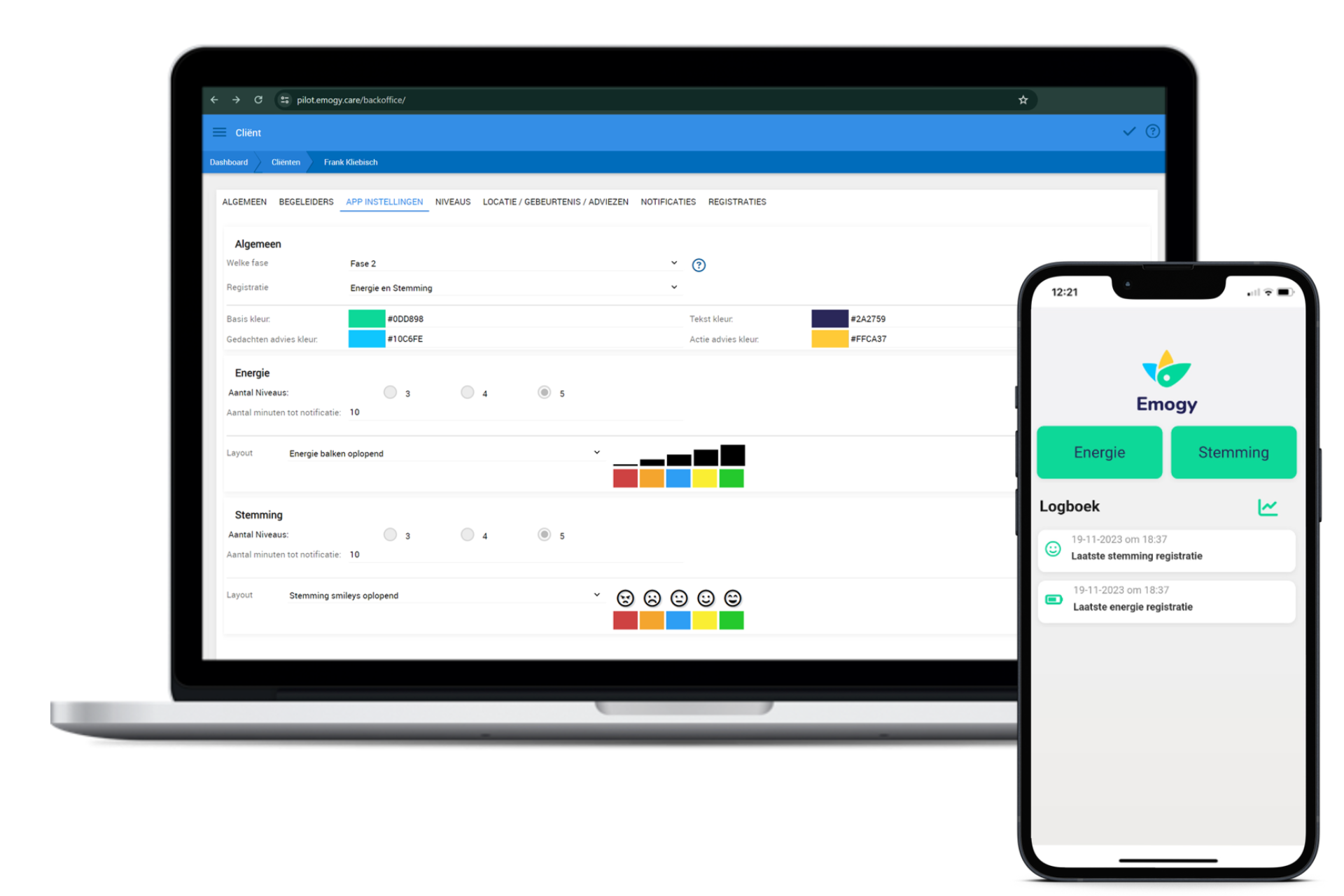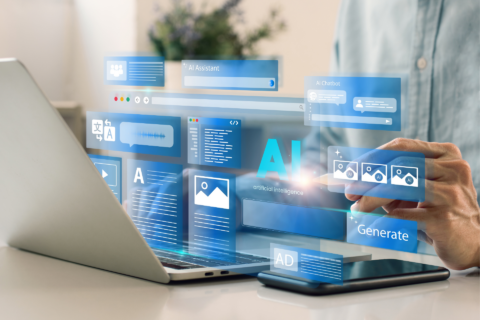How to give people with autism a grip on their emotions and energy? With this question in mind, NICE Software developed the app EMOGY together with Autismepunt. The first experiences are positive. External research should substantiate the functioning scientifically and indicate how the app can be even better.
Two years ago, NICE developed EMOGY together with care provider Autismepunt. EMOGY consists of an app, in which clients register their energy and mood levels, and a dynamic back office for their care supervisor. As part of the treatment plan, it helps people with Autism Spectrum Disorder (ASD) get a better grip on their emotion and energy, in order to become more self-reliant.
Personal situation
EMOGY is a flexible system. Client and caregiver together tailor its use to the client's personal situation. In the app, clients give scores related to their mood and energy level. Very simply with a color, a number or a smiley face. Optionally, they fill in location, circumstances and other comments. This gives the care supervisor, who sees a report in the back office section, more insight into the context.
Advisory function
An important part of EMOGY is the advice function. Jolanda Gubbels, implementation consultant at NICE: "The care supervisor knows his client and has set up a personal advice in the app for each score. For example, if a client is feeling very restless with a red score, the advice might be 'listen to music' or 'have a cup of tea and sit down for a while'. Big advantage, of course, is that such advice is available anywhere and at any time."
Greater insight
In this way, EMOGY helps people better understand their autism and become more self-reliant. They indicate in the app whether the advice helped them. That helps caregivers tailor their advice even better to the client. They also see trend lines of scores, which offer insight into the progress a person is making.
Gubbels: "We developed EMOGY together with Autismepunt and that is also how they use it: as a support tool within treatment. Thanks to the registrations in the app, they can better guide their client."
Doing research
The system is now being used within several mental health organizations and the experiences are positive. NICE strongly believes in the added value in care processes. "But to prevent 'us from WC-Eend', we have to be able to demonstrate this added value independently and substantiate it with figures," says Gubbels. "For example, to win over health insurers. We also wanted to know how the app could be further improved. We therefore felt external research was necessary."
Micaela Teran Ferrel, master's student in Digital Technology Engineering at the Fontys University of Applied Sciences in Eindhoven, is conducting the study. "I am researching at Autismepunt the effects of EMOGY and which technical improvements can contribute to even higher acceptance. I myself am very enthusiastic about this kind of user centred technology. You develop technological innovation together with users and see what really adds value for them."
Points of improvement
According to Teran Ferrel, clients like using the counseling feature. As an area for improvement, they say they would like to see even more information about their progress in the app. Charts similar to those in the back office, for example. "We know that people with autism are eager to learn when it comes to autism and themselves, so that didn't surprise me," he said.
Another desire, which emerged from the care supervisors, is to automatically factor registered "circumstances" and "location" into the recommendation. "This can be done when you classify locations," the student explained. "For example, if there are more frequent red scores at school, or at a train station, you can factor that into your advice."
A third wish from users is that EMOGY provide more insight into the extent to which scores align with treatment goals.
Shorter treatment process
Thanks to the registrations in the app, caregivers get to know the client faster and can advise them better and more timely. To give feedback on a situation, they don't always have to wait for a scheduled appointment. "Clients themselves also get more insight, for example, which situations trigger their emotions," Gubbels says. "Our goal is to increase their self-reliance. In theory, that leads to less unplanned care, a shorter treatment process and reduction of waiting times. We hope to substantiate that with the results of Micaela's research."
In her study, Teran Ferrel compares groups that use EMOGY with groups that do not use it. "I look at different KPIs. Besides treatment duration, these include the number of problems treated during a session or the number of emotional triggers in a given period of time."
Deployment of AI
The master's student is also exploring how AI algorithms can be used to provide even better supportive advice. "There are data available from Autism Point from the past two years, but that is not enough. Therefore, I am also looking for other data sets with which we can train the AI algorithm. I am hopeful, because more and more data are being collected in the field of mental health."
Wider application
Both envision broader applications for EMOGY. For example, for people with depression or burnout. For these groups, too, the system could provide better awareness of energy and mood levels and promote self-reliance. Gubbels: "With all the waiting lists in mental health care, that too is worth investigating."












